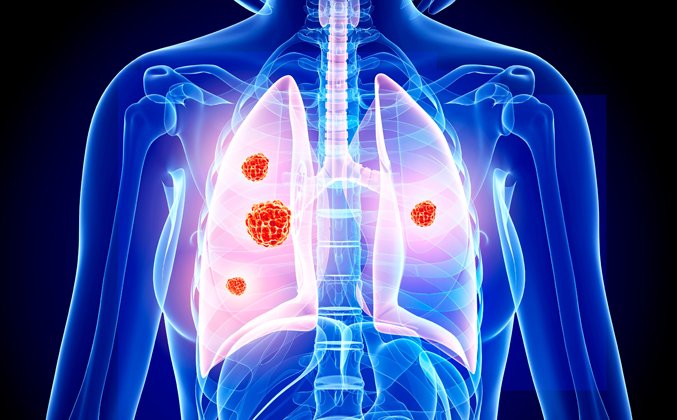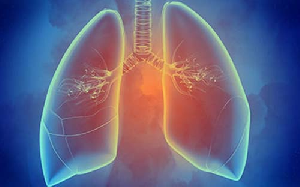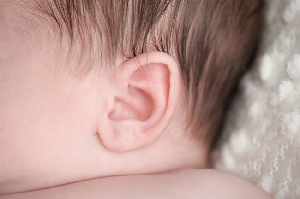
Guowei Li, Xuhui Zhang, Yingxin Liu, Junguo Zhang, Likang Li, Xin Huang, Lehana Thabane, Gregory Y.H. Lip
European Respiratory Journal 2022 59: 2101399; DOI: 10.1183/13993003.01399-2021
Abstract
Background Research on glucosamine shows anti-inflammatory and anti-cancer benefits with minimal adverse effects. We aimed to explore the relationship between use of glucosamine and risk of lung cancer and lung cancer mortality based on data from the large-scale nationwide prospective UK Biobank cohort study.
Methods Participants were enrolled between 2006 and 2010 and followed-up to 2020. The Cox proportional hazards model was used to assess the relationship between glucosamine use and risk of lung cancer and lung cancer mortality. Subgroup analyses and sensitivity analyses were performed to explore the potential effect modifications and the robustness of the main findings.
Results 439 393 participants (mean age 56 years; 53% females) with a mean follow-up of 11 years were included for analyses. 82 603 (18.80%) participants reported regular use of glucosamine at baseline. During follow-up, 1971 (0.45%) lung cancer events were documented. Glucosamine use was significantly associated with a decreased risk of lung cancer (hazard ratio (HR) 0.84, 95% CI 0.75–0.92; p<0.001) and lung cancer mortality (HR 0.88, 95% CI 0.81–0.96; p=0.002) in fully adjusted models. A stronger association between glucosamine use and decreased lung cancer risk was observed in participants with a family history of lung cancer when compared with those without a family history.
Conclusion Regular use of glucosamine was significantly related with decreased risk of lung cancer and lung cancer mortality, based on data from this nationwide prospective cohort study.
Regular use of glucosamine was significantly related with a 16% lower risk of lung cancer and a 12% decreased risk of lung cancer mortality https://bit.ly/3ixJAND
Footnotes
-
Author contributions: G. Li, X. Zhang, L. Thabane and G.Y.H. Lip: conceived and designed the study. G. Li, X. Zhang, Y. Liu, L. Li, J. Zhang and G.Y.H. Lip: acquired data, performed analyses and interpretation, and drafted the manuscript. G. Li, X. Huang, L. Thabane and G.Y.H. Lip: provided professional and statistical support, and made critical revisions. All authors read and approved the final manuscript. G. Li, L. Thabane and G.Y.H. Lip act as the guarantors of this work.
-
Conflict of interest: G. Li has nothing to disclose.
-
Conflict of interest: X. Zhang has nothing to disclose.
-
Conflict of interest: Y. Liu has nothing to disclose.
-
Conflict of interest: J. Zhang has nothing to disclose.
-
Conflict of interest: L. Li has nothing to disclose.
-
Conflict of interest: X. Huang has nothing to disclose.
-
Conflict of interest: L. Thabane has nothing to disclose.
-
Conflict of interest: G.Y.H. Lip has served as a consultant for Novartis, Bayer/Janssen, Biotronik, BMS/Pfizer, Medtronic, Boehringer Ingelheim, Verseon and Daiichi-Sankyo, and as a speaker for Medtronic, Bayer, BMS/Pfizer, Boehringer Ingelheim and Daiichi-Sankyo; no fees have been received directly or personally.
-
Support Statement: This work was supported by the Science Foundation of Guangdong Second Provincial General Hospital (grant YY2018-002; recipient: G. Li) and the Medical Scientific Research Foundation of Guangdong Province of China (grant A2020453; recipient: G. Li). The funders/sponsors played no role in the study design, conduct, analysis, interpretation of data, writing, review, approval of the manuscript or decision to submit for publication. Funding information for this article has been deposited with the Crossref Funder Registry.
- Received May 18, 2021.
- Accepted July 14, 2021.
- Copyright ©The authors 2022. For reproduction rights and permissions contact permissions@ersnet.org














